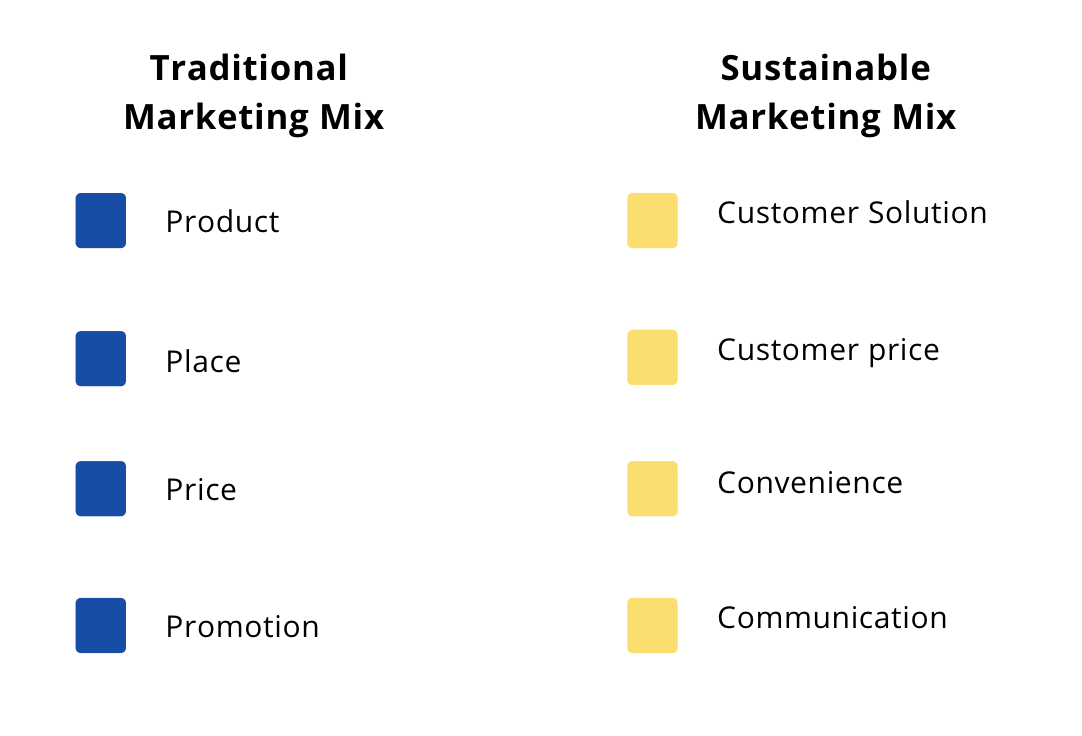MARKETING & SUSTAINABILITY
Sustainability Marketing Strategy: Engaging Consumers in Responsible Consumption
The father of marketing, Philip Kotler, has said that ”marketing management is the art and science of choosing target markets and getting, keeping and growing customers through creating, delivering, and communicating superior customer value.”
Kotler popularized Jerome McCarthy’s 1960’s notion of the marketing mix, also known as the 4 P’s of marketing: product, price, place and promotion. According to Kotler, “(The) Marketing Mix is the set of controllable variables that the firm can use to influence the buyer’s response.”
And buyers have responded! Marketing has been a part of what has lifted millions of people out of poverty. It has also been a part of what has left many trapped. Likewise, marketing has helped spread the word on environmental conservation while also driving consumption to unsustainable levels.

Case Example: Lush Cosmetics Charity Pot Coin Campaign
Three Levels of Sustainable Marketing Strategy
Marketing grew out of the need to compete in the marketplace and sell products. Certainly, sales and revenue-generation will continue to be critical. However, marketing strategy today includes partnering with consumers in the transition to more sustainable consumption.
According to Ballantine and Kemper’s 2019 review of over 200 published papers on the topic, sustainability marketing strategy takes place at three levels of engagement which we will call:
-
- Doing Less Bad
- Doing More Good
- Doing Different

Doing Less Bad
Ballantine and Kemper explain that this types of sustainable marketing strategy “encapsulates the majority of sustainability marketing perspectives as it focuses on change within existing struc- tures or arrangements.”
The Doing Less Bad approach involves examing three attributes of products:
- “production conditions” (how products are made, e.g. child labor, working conditions, emissions from production) Apple’s Supplier Responsibility
- “product characteristics” (what the product contains and what it does, e.g. CO2 emissions of use, chemicals) – United Airlines Sustainable Aviation Fuels
- “exposures and risks” (how product use affects people and the environment, e.g. VOCs, trans-fats) Unilever “Whats In Our Products” site
Doing Less Bad doesn’t challenge notions of private consumption or product ownership. Those considerations come with Doing More Good and Doing Different.

Doing More Good
Doing More Good “acknowledges that current consumption levels are unsustainable, usually reflecting on either inequity between developed and developing nations or the Earths’ limited resources.”
Whereas Doing Less Bad is focused on promoting sustainable products, Doing More Good is focused on promoting sustainable lifestyles.
Three key shifts are made during a move to the Doing More Good phase of sustainable marketing strategy:
- from individual ownership to leasing and sharing (e.g. Rent the Runway)
- from customer focus to external stakeholder focus (e.g. Interface’s Love Carbon campaign
- from sales orientation to an education orientation (e.g. CNote’s storytelling about impact investing)

Doing Different
Doing Different, as Ballantine and Kemper “aims to change institutions that inhibit a transition to a sustainable society…valuing continuity over profit…[and addressing] the barriers that consumers face with sustainable consumption; such as our persuasive consumption ideology, institutional barriers and social norms.”
Doing Different is focused on promoting sustainable systems and institutions, in addition to the lifestyles and products.
There is an emphasis on promoting and supporting social enterprise since Doing Different recognizes that many products and consumption models need to be disrupted. Marketing can help support the disruptions that emerge from start-ups focused on profitable ways of addressing social and environmental issues.
Ultimately, as the authors contend, this is about providing “a critical lens onto current marketing practices, consumption ideology/culture and the institutions that inhibit a move to a sustainable society.”
Case Example of Doing Different: Patagonia’s Don’t Buy This Jacket campaign.
The 4 C’s of the Sustainable Marketing Mix
Thanks to the work of Peattie and Belz (2010), sustainable marketing strategy adds 4 C’s to the traditional 4 P’s of the marketing mix.
Consumer Solution – products and services that delight customers while outperforming alternatives on human health, community impact, and environmental performance
Consumer Price – pricing strategies that reflect full life cycle costs upstream (e.g. sourcing) and positive impact downstream (e.g. return, re-use, recycle); includes pricing and product strategies for remanufactured products and those serving low-income communities (see Bottom of the Pyramid)
Convenience – features and benefits that lower the total customer cost for accessing the product or service, and for returning it in the case of take back programs (e.g. cell phones)
Communication – product claims are supported by sound research and made transparent to the customer. See US Federal Trade Commission’s Green Guides to avoid misleading claims (i.e. “greenwashing”).
Case Example: Interface’s Love Carbon Campaign
Learn about more sustainability concepts within this major.
ADVANCE YOUR KNOWLEDGE OF SUSTAINABLE MARKETING
Learn what sustainable marketing is all about and its importance
Learn the important things to know in this field
Learn how sustainability fits into your courses
Learn how sustainability relates to your career

